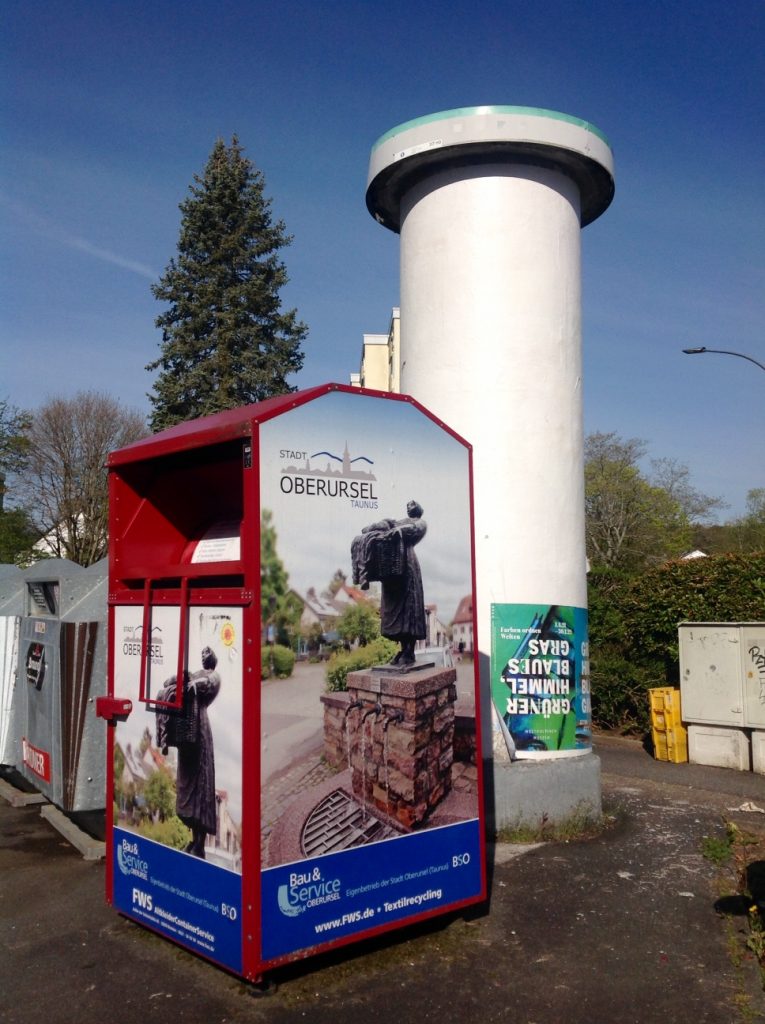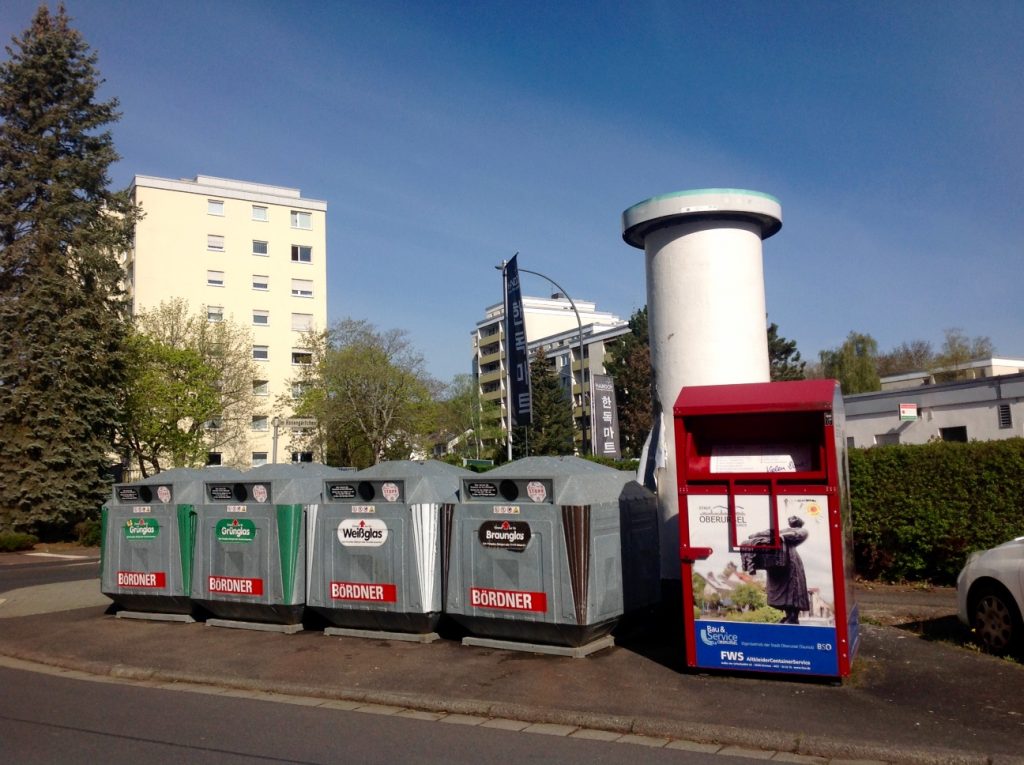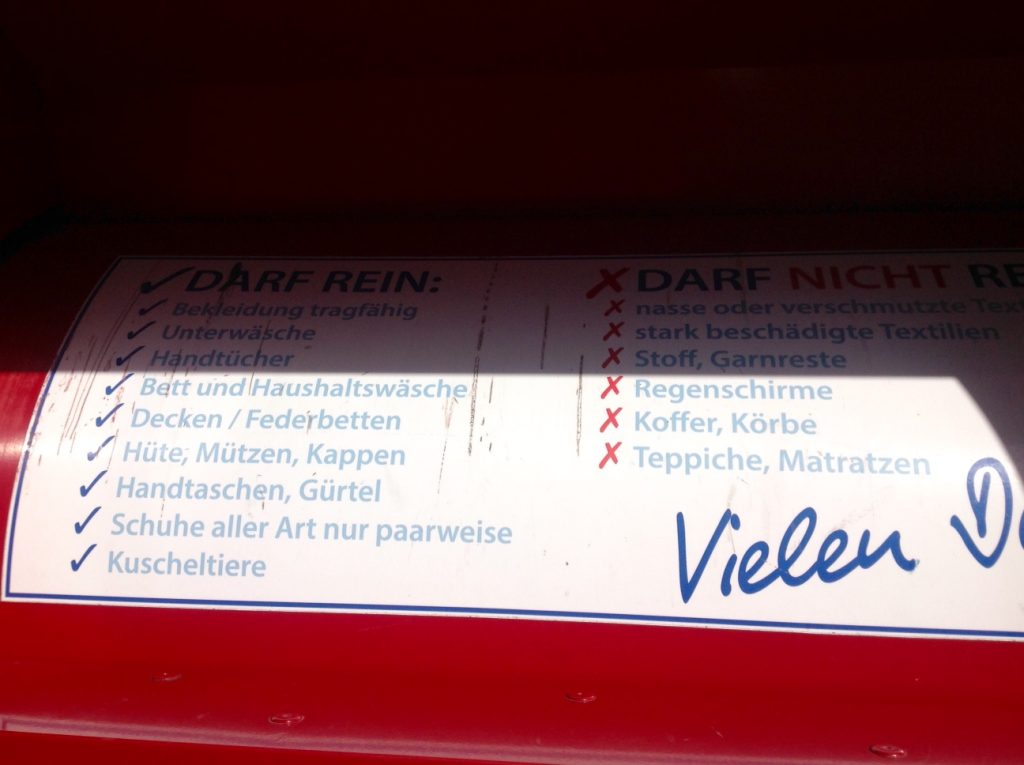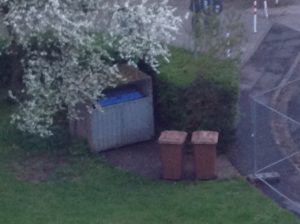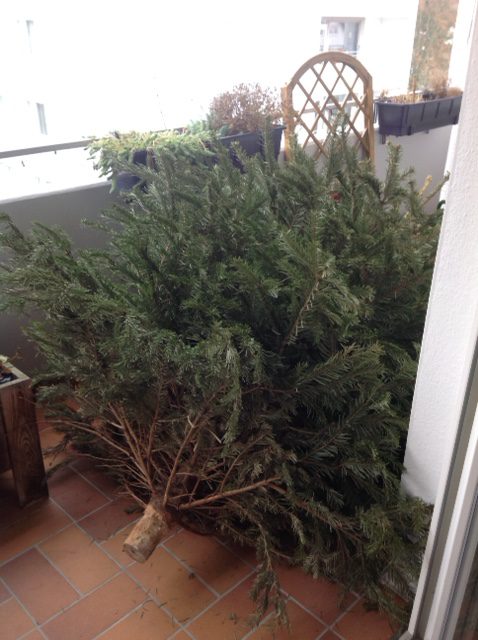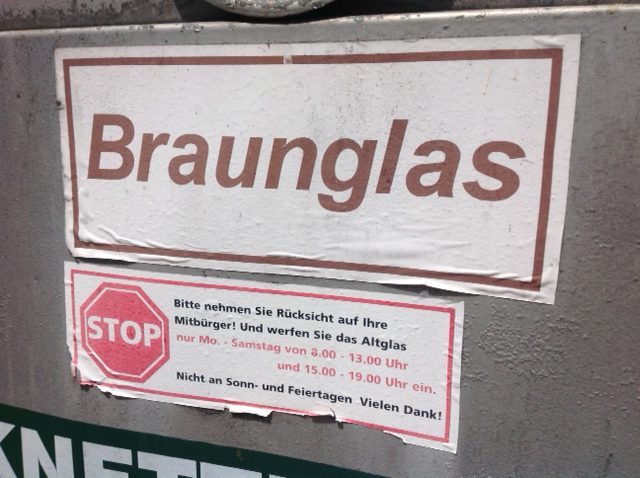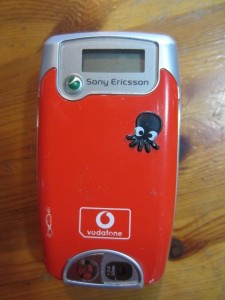These pretty red used-clothes containers have been in place since at least 2014, when I last wrote about it here. There are 24 containers to be found throughout the city. Click here for a list of locations.
Old clothes, old shoes, and home textiles can be disposed in these containers around 21 spots in the city. These red containers, depicting the famous ‘Wäschfraa-Brunnen‘ (wash woman fountain) are usually located next to the used-glass containers (Altglas Container) and at the city’s recycling center.
Recently, this question of what happens to the clothing deposited there was directed to me, and my research about this topic answered some of my own questions too.
Yes, you can put in your frayed clothing, such as worn down socks with holes, a stained table cloth, torn curtains, and much more – as long as these items are not soiled.
For many years, I had been putting torn clothing and the likes directly into the waste bin, where they contribute to the global mountains of trash as well as air pollution when the trash goes up in flames.
From the recycling center’s website, I have this information about what happens to the donations after pick up. What happens to the used clothes?
Then click on (in German): Was passiert mit den Altkleidern? and you get the explanation in German.
A brief translation: The old clothes get recycled by the Bremer FWS-Boer-Gruppe. They get sorted in seven certified sorting centers in Germany, the Netherlands, and Belgium. Using 250 points of criteria, they are sorted by hand. This is done without chemical analyses or machines. Based on quality and demand, the next stop might be a second-hand shop, or a worldwide market. The final stage is going to the factory where non-wearable goods get further processed.
Here is a list of what goes in there: ✓ and what doesn’t: ✗
They take (✓list) : wearable clothes, underwear, towels, bed sheets and other household items (tea towels, etc.), blankets, bedding, goose-down feather bed covers, hats, caps, woolen hats, hand bags, belts, shoes of all kind (bundled in pairs) and plush animals.
They do not accept ( ✗ list): wet or dirty textiles, badly damaged textiles, fabric and yarn remnants, umbrellas, suitcases, baskets, carpets, mattresses.
All the other collection-bins or used-clothing containers (usually in plain white/grey) are run by various other organizations and charity groups. I have not seen a list attached to any of them, but it might be safe to assume the rules for acceptable items are similar.
To add a splash of color on your next shopping trip, have a look at these cute strawberry bags on Amazon: https://amzn.to/3hbdmc7
